Osteopathy is a form of manual medicine that focuses on the detection, diagnosis and treatment of problems within the musculoskeletal system.
Osteopathy
Osteopathy for pain relief, movement and overall well-being
What is Osteopathy?
Decrease pain, improve mobility
and restore normal function
Osteopathy can help with:
- Lower Back Pain
- Neck Pain
- Headaches
- Arthritic Pain
- Sports Injuries
- Pain during Pregnancy
- Repetitive Strain Injuries
- Postural Problems
- Joint Injuries
- Osteopathy for babies using the Cranial technique
What to expect?
We treat a wide range of
musculo-skeletal conditions
Osteopaths use a very hands-on approach when examining, and treating a patient. The techniques used are safe and involve manipulation, massage, joint mobilisation and stretching. These target specific areas of muscle, tendons, joints and other connective tissues to influence the way the body functions promoting healing, reducing pain and restoring normal movement to improve your overall wellbeing.
An improved structural function can help with other body activities including nerve conduction, circulation, breathing, digestion and elimination, helping improve general health and vitality.
What are the benefits?
Reduce back, neck and joint pain and restore normal function
Osteopathic techniques work with the patient’s body to rebalance the structure and function of the body not only treating the presenting problem, but approaching the body holistically. This involves looking at all the varying factors that have contributed towards your symptoms.
Treatment is aimed at improving mobility and reducing the inflammatory processes to ultimately bring relief from pain.
FAQs
What problems can Osteopathy help with?
Osteopathy isn’t just for lower back and neck pain. We’re able to treat a wide range of conditions and problems. These include:
- Lower Back Pain
- Neck Pain
- Headaches
- Arthritic Pain
- Sports Injuries
- Pain during Pregnancy
- Repetitive Strain Injuries
- Postural Problems
- Joint Injuries
- Treatment of babies with Cranial Osteopathy
If you want to know whether you could benefit from Osteopathic treatment, please contact us and one of our osteopaths will be happy to talk to you.
What can I expect when I visit an Osteopath?
Your initial consultation with the Osteopath will include a detailed case history taking as well as careful observation and examination using highly developed skills of palpation (feel through touch), to find areas of restriction, strain, and weakness in the body.
After making a diagnosis, your Osteopath will explain their findings and discuss their diagnosis and treatment plan with you so you can understand what’s causing the problem.
You may be asked to move, or remove some items of outer clothing for the Osteopath to get a clearer picture of how your body’s moving, or not!
Treatment will aim to relieve your symptoms, improve function and promote healing. Through treatment and advice, we also seek to help reduce the chances of the problem recurring.
Does Osteopathy work?
Yes, it does!
To quote from the Institute of Osteopathy-“Osteopaths are highly competent healthcare professionals, recognised by the NHS as fully qualified to diagnose and treat independently.
Over 30,000 people every day visit an osteopath suffering from a variety of conditions including neck or back pain, joint or muscular pain, Sports injuries, recurring headaches and more.”
Osteopathy is available on the NHS in some areas. National guidelines say it should be available everywhere for low back pain.
Our patients are our best advocates, to learn more about patients experiences with Osteopathy ask someone who has been treated by an Osteopath.
Or for further evidence, please refer to the National Council for Osteopathic Research (ncor.org.uk)
How many treatments will I need, & do I need to see my doctor first?
A doctor’s referral is not required if you are paying for osteopathic treatment yourself. Some insurance companies may require you to see your doctor first, after which you should be able to see an osteopath quickly, without the long waiting times often incurred with other treatment options.
The number of treatments needed depends on the individual, their condition and it’s severity, as well as the length of time you have had the problem. As a guide, a course of three to six treatments usually offers our patients significant relief with each visit building on the progress of the one before.
It is important to bear in mind that your age, level of health, and stress will influence how fast your body will respond and heal, and in turn how many treatments you will need.
Visits become less frequent as your body stabilises, and once the presenting problem has improved patients will often opt for preventative, maintenance care through Osteopathy, and/or massage therapy.
As part of the osteopath’s treatment plan they often offer lifestyle advice, self-care information or specific exercises to help speed up the recovery process, and very importantly maintain improved health.
Your osteopath will tell you if they can treat you, or if they need to refer you to another medical professional, or for further medical investigations.
What training do osteopaths undergo?
Osteopaths undergo extensive training by means of a four-year full-time degree course. To graduate with an Honours degree, osteopathic students are trained with a specific emphasis on anatomy, physiology, neurology and pathology. They also study spinal adjusting, and soft tissue techniques under the guidance of qualified osteopaths, and must complete demanding final examinations.
The qualified Osteopath must apply to a governmental, or professional licensing board before they are granted the privilege to practice. And due to the Osteopath Act 1993, it is illegal for someone to call themselves an osteopath unless they have undergone training in an approved school.
There are therefore the same safeguards in place as with doctors and dentists.
Osteopaths must also comply with the GOsC (The General Osteopathic Council) regulations, and complete and submit an annual CPD-continued professional development- portfolio.
Many osteopaths will also continue their education through various post graduate training courses.
All our osteopaths are registered with the GOsC.
Where does Osteopathy originate from?
Osteopathic medicine was developed by a doctor, Andrew Taylor Still who was born in Virginia, USA in 1828.
Dissatisfied with the very orthodox model of medicine at that time, crude surgical methods and abundant drug prescriptions. A.T Still sought to seek new methods of working with the body’s systems to treat sickness and restore the body’s equilibrium.
He looked specifically at how the musculoskeletal system could impact health, and developed physical treatment approaches, for which he then gave the name ‘Osteopathy’.
In 1892 A.T Still formed a school in Kirksville, Missouri for the teaching of Osteopathy. Osteopathy was then brought to England in the early 1900’s, and The British School of Osteopathy (now known as University College of Osteopathy) was founded in 1917, with The British College of Osteopathic medicine in 1936.
Is Osteopathic treatment covered on my private medical insurance?
Yes, most of the major private health insurance companies cover Osteopathic treatment.
We would advise you call your insurance companies helpline to find out the best way to claim, under your individual policy. Your spouse, partner and children may also be covered under your policy. Please provide the details of your provider when booking an appointment.
Here at The Ilkley Osteopathic Practice, we are registered with AXA, Aviva, PPP, BUPA, Simplyhealth and others. Some of the fee for osteopathic treatment can also be reimbursed back from The Leeds, and The Bradford Hospital Funds if you are with them.
Our Services Include
Our experienced professionals provide a wide range of healthcare services
Osteopathy for Pregnancy & Baby
Learn how Osteopathy can help support you and your baby during pregnancy and birth.
Find Out More






